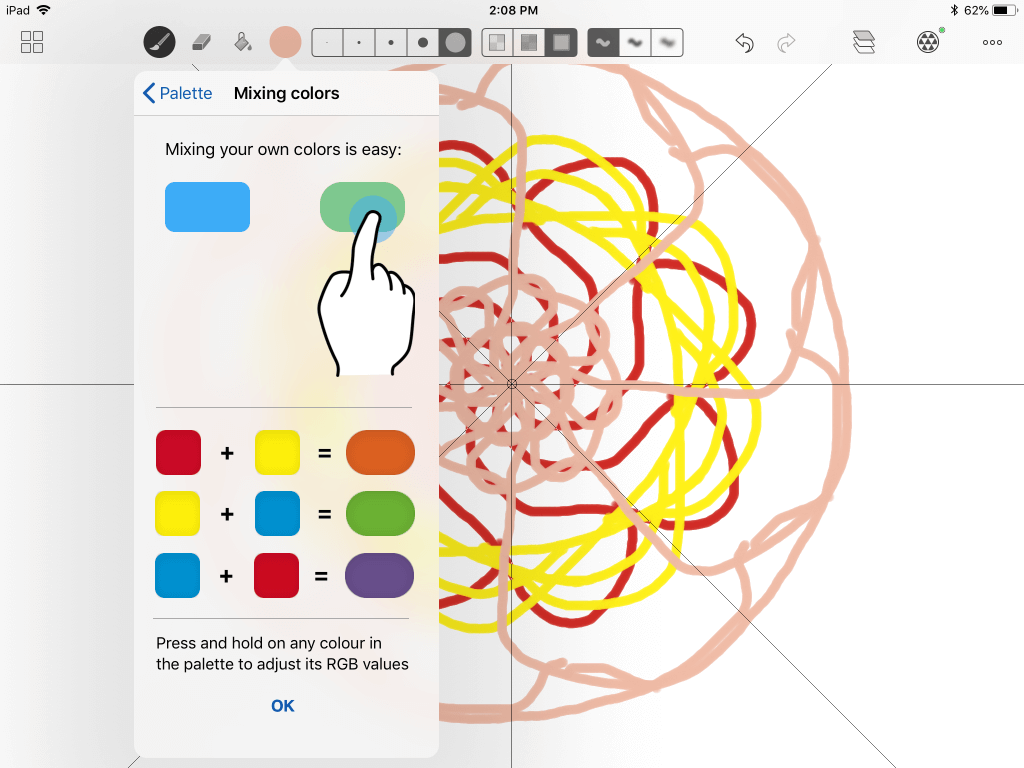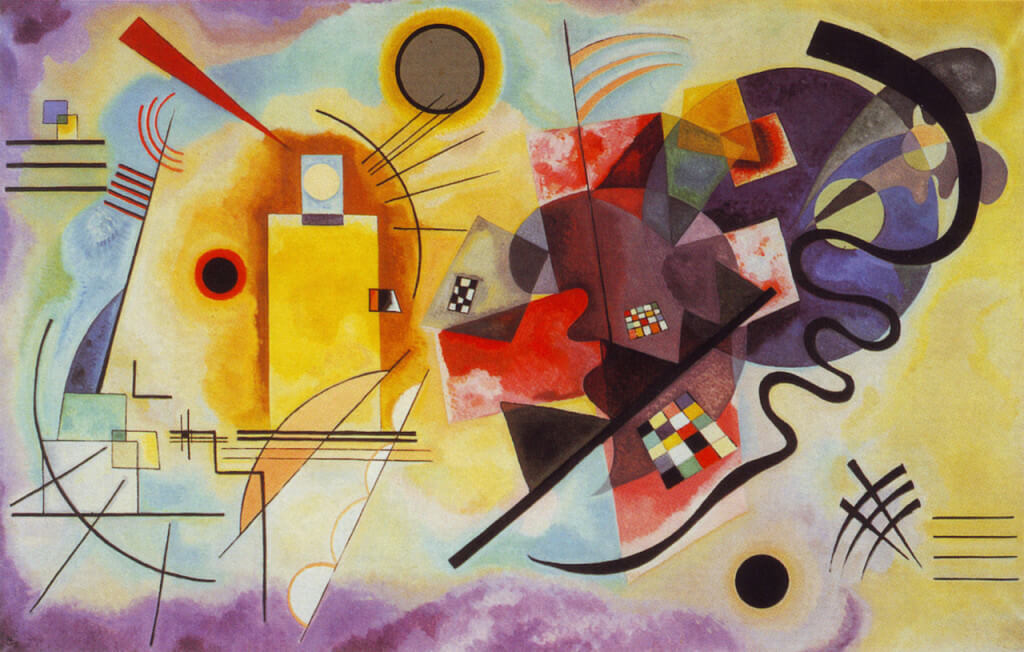Susan Riley | December 2018
15 Ways to Integrate Art and Math in Elementary Classrooms
Math and art go together like peanut butter and jelly! You just have to know where to look and be a little creative in creating lessons that are meaningful for both content areas. You never want to sacrifice the skills and processes in either area when creating an arts integration or STEAM lesson.
While at first glance the integration of math and art would seem like trying to mix oil and water, there are many useful ways to integrate these two subjects. Children can use colors and shapes to enhance their understanding of math. They can also apply math theory to pictures and objects. When thinking of math not strictly in terms of arithmetic, but also in terms of problem solving, geometry, and visualization, ideas will start to materialize for integrated lesson plans. Here’s a list of art projects that make authentic connections to math ideas and concepts.
15 Math Art Project Ideas
1. Explore symmetry through tapestries
Radial symmetry is everywhere in old tapestries, particularly in islamic art. Review some of these tapestry examples and identify the symmetry presented. Then, have students create their own radial symmetry design blueprint using number rules. Assign different students different number rules (+3,+4,+5). Students can then use a 10 point circle, a ruler or straight edge, and a pencil to create their own shape designs using their number rules.
2. Telling time activity
Students draw a clock and color in two circles around the circumference of the clock. Make the inner circle blue. This corresponds to the hours on the clock. Make the outer circle red. This corresponds to the minutes. Do not write in the numbers. Just write in line demarcations in place of the minute hands. Construct an hour and minute hand, color them the corresponding blue and red colors, and fasten them to the center clock so that they can freely rotate around. This lesson helps students visualize the imaginary numbers that are on the clock. Ask students about what numbers correspond to the placement of the hands on the clock and have them count by 5’s all the way up to 60.
3. Cut geometric shapes of different shapes for collages
Create a tissue paper collage of abstract art using various sizes of the same shape. Have students cut out all rectangles or squares in different sizes. Then, they can create a collage of one of the shapes. After gluing, have students measure each of the shapes on their paper that are placed next to or layered on top of each other (connected pieces). For each connected shape, have students glue down a label that joins the two pieces and write down the difference between the lengths of both connected shapes.
4. Composite figures
Students can work to create composite figures using geometric shapes in the style of medieval stained glass work. Using pencils and scrap paper create a triangle, square, or rectangle using only smaller triangles, rectangles, and squares. Using a black marker, draw a large geometric shape in the middle of your page. Then draw the smaller geometric shapes that comprise, or make up, that larger shape. Color in the shapes using different colored markers.
5. Graphing art
Reference the work of Mondrian and have students create their own gridded piece of artwork. Provide coordinates and have students plot them on their grid paper. Then, color in each section based on where the coordinates fall. For example, if the coordinates fall in the upper right quadrant, students can choose a warm color.

6. Make measurements
Emphasize the measurements that students make by using rulers to measure grids or cut frames for art projects. Also, students can take their rulers and measure various objects around the classroom, such as paper, crayons, the chalkboard, books, paintbrushes, and their desk. Students can also sort their art materials according to their sizes.
7. Determine ratio for paint mixing
When mixing and blending colors, teach students the ratios used in the mixing, such as “2 parts blue + one part green” and “4 parts white + 1 part grey.”
8. Part to Whole with String Art
Study some examples of modern string art. Have students discuss what they notice about the artwork and the art process. Provide students with a square piece of cardboard and several pieces of string with different colors, and a pair of scissors. Students should create inch-long cuts around the perimeter of the plate in equal spacing (they will need to measure this). Then, string one piece of yarn from one notch across to the other notch on the other side of the board and tie it in the back until the yarn is taut. This is a number line. Label one side as 0 and the other as 100. Then, have students determine where 25 would be on their number line. Have them string another piece of yarn along this spot and attach at the end notches. Label each end as “25”. Continue at various intervals across the number line. Then, lay a piece of tin foil across the board and string and color in the intersections that naturally occur.
9. Solve for the Unknown with Op Art
Study the form of Op Art and how it is used to create optical illusions. Then, provide all students with a piece of construction paper and paper strip scraps. Give each student a half-completed equation, ie: 8 x ? = 48. Students must figure out what number to use for how many total blocks they need to create, as well as how many rows and how many columns they will need to create. Then, follow these instructions for creating an Op Art Paper Weaving.
10. Create a piece of Fractal Art
Have students look at examples of fractals and fractal art. Explore the idea that a fractal is a smaller portion of the whole original. For instance, you could start with a triangle and then
draw an upside down triangle inside of the original. This would be a quarter of the original triangle, but still the same shape. You could then create another triangle inside of your 2nd triangle, which would be another 1/4 (or 1/8th of the original). Create a piece of Fractal Art by selecting a shape and then measuring fractals of that same shape onto other pieces of paper and cutting them out. Label each fractal as its corresponding fraction to the original shape. Then, create a piece of art using the original shape and its fractals.

Fibonacci Word Fractal by Samuel Monnier
11. Array mosaics
Create a tile mosaic using rectangular arrays of up to 100. Give each student a single-digit number and a piece of grid paper. Ask them to shade an array on their grid paper that would represent that number multiplied by 10. For instance, if the number is 6, they could fill in 60 blocks. Ask students how they used their understanding of arrays to help them with this. Then,
students can sketch a design within just the shaded blocks. Finally, they can create a tile mosaic based on their grid array drawings. They may only use as many tiles as the sum of their multiplication equation and each tile may only contain one item and/or color.
12. Escher-inspired tessellations
Give each student a different Escher print copy. Have them measure as before and determine how many square units are in their print. Then, create their own Escher-inspired tessellation print. Decide upon an object to use for the tiling. Then, measure its square unit. Create a tiling that does not contain any gaps and which uses color to contrast the pattern.
13. 100 day Aboriginal tile mosaics
Combine your 100th day of school celebration with a study on base ten. Create a 100 dot aboriginal tile mosaic. Provide each student with a single tile. Students study aboriginal art and then design an image they would like to create (such as a turtle or a river). Divide the picture into 10 equal sections. Decide what section of the larger art each tile represents. Students must create that section of the artwork on their own tile. Each tile contains only 10 dots. Combine 10 tiles to create a mosaic.
14. Interpret multiplication as scaling through shadow art
Create a Shadow Tracing. Place an object (such as a Lego block) on a piece of paper and then shine a light on it so that it creates a shadow. Examine the size of the shadow compared to the size of the object (it is larger than the original object). Then, measure the size of the shadow in length and width. The teacher will provide each student with a fraction greater than 1, such as 20/5 or 16/4. The student will need to create a shadow of the shadow tracing that is representative of their original length and width x their received fraction. For instance if my shadow tracing measured 3” x 1” and I received the fraction 20/5 , my new shadow of my shadow drawing will need to be 3” x 20/5 (12”) by 1” x 20/5 (4”).
15. Classify 2-D figures with Kandinsky
Using the work of Kandinsky, measure a variety of shapes he used in his work. Compare all of the attributes and draw conclusions about 2D figures in each subcategory represented in the work. Then, create a piece of artwork in the style of Kandinsky that maintains these distinct attributes and label each area of the artwork with the attributes assigned.

Wassily Kandinsky, “Yellow-Red-Blue” (1925), oil on canvas (Musée National d’Art Moderne, Centre Georges Pompidou, Paris, via WikiArt)
There are many fun and educational ways to integrate math and art for elementary school students. If you are looking for a way to reinvigorate your classroom, Arts Integration is a wonderful way to engage your students and spark your own creativity!
Additional Sources:



